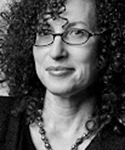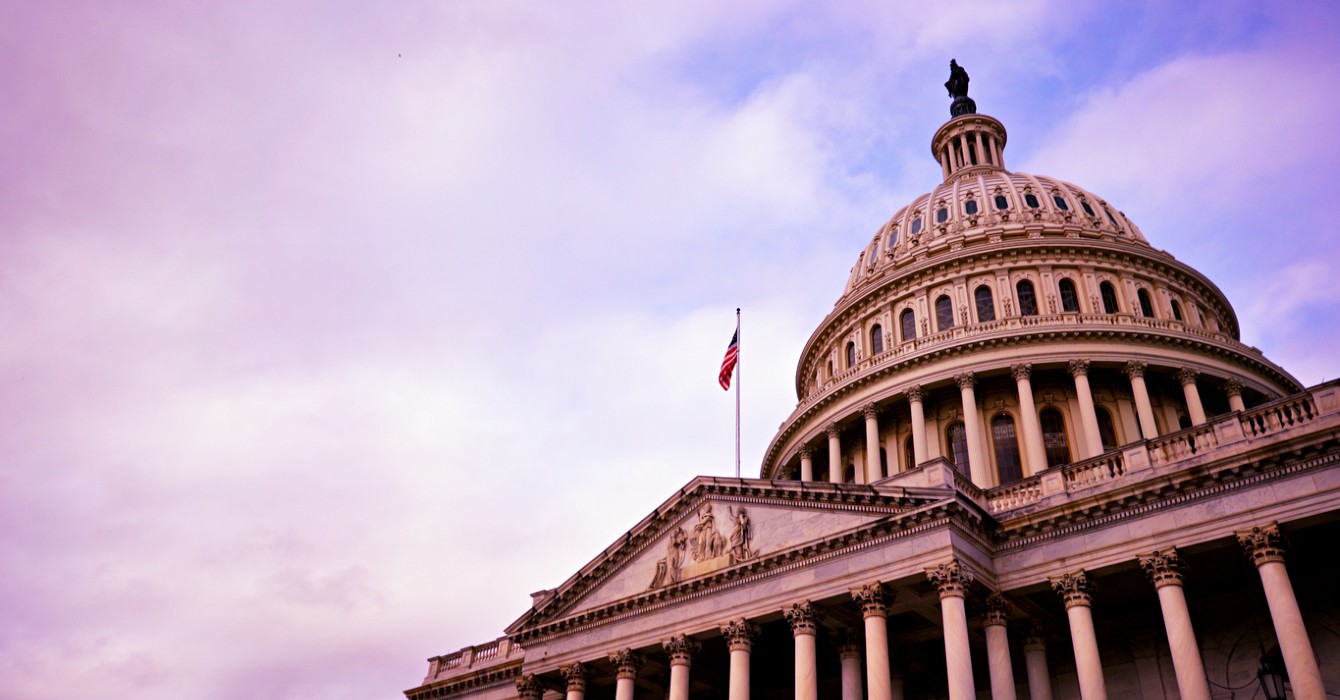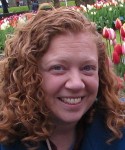Sidra Ali is all too familiar with interfaith dialogue.
Growing up in Commerce Township, Michigan, a small town 38 miles from downtown Detroit, Ali, together with her siblings and their Pakistani-immigrant parents, lived in the only Muslim household in town. At the public school she attended, she was the sole Muslim student.
Explaining her brown skin and foreign religion to her mostly Christian neighbors became a way of life -- especially after the Sept. 11, 2001, terrorist attacks, which struck when she was 8.
But after participating last spring in a three-day IDEA Generators Conference, Ali discovered a whole new way of doing interfaith work. The conference, co-hosted in Chicago May 27-30 by the Issachar Fund and the IDEA Fund, both of Grand Rapids, Michigan, took a novel approach to bringing Christians and Muslims together.
Instead of inviting participants to sit around and talk about theological differences and similarities, the organizers summoned the 32 students, professors, and professionals from across the United States and beyond to a hotel in downtown Chicago and divided them into six working groups. Each group was charged with designing a project that would allow Muslims and Christians to work on an area of joint concern: environmental stewardship -- or, in the more common Christian parlance, “creation care.”
The conference was set up as a competition. Each team presented a project to a jury of academics and professional business leaders who judged it on the strength of its “green” idea and interfaith collaboration. The first- and second-place teams were awarded $15,000 and $10,000, respectively, to be split evenly among team members.
“What I really appreciated about the IDEA Generators Conference is that it took people who were Muslim and Christian and it said, ‘We give you this challenge of creating a way to engage the community around sustainability,’” said Ali, 23, who is entering the master of theological studies program at Harvard Divinity School this fall. “They weren’t pushing us to think theologically. They already accepted that we’re people of faith. They wanted us to put what we know into action.”

For Ali, that action component was key. So often she has seen interfaith dialogue fizzle and fall flat. People express noble sentiments about human beings created in the image of God. They make vague proclamations about how their faith preaches love and service to humanity. But in the end, all of that talk comes to naught.
Interfaith interaction flowed naturally
At the conference last May, interfaith interaction flowed naturally as part of the larger goal: finding a way to make the world a greener place.
Over dinner, for example, Ali was able to explain to her teammates the notion of halal, by which Muslims eat meat that has been ritually slaughtered. Later, when she went back to the hotel to say her prayers, her Christian colleagues were inspired to go back to their rooms to pray as well.
“There was no, ‘Let’s take some time to talk about our faith or religion,’” she said. “It was seamless, effortless.”
Kurt Berends, the president of the Issachar Fund and a trustee of the IDEA Fund, which co-sponsored the conference, said that such meaningful interaction was intentional.

While interfaith dialogue is critically important, the conference was designed to go beyond that, he said. In many ways, the three days in Chicago were as much about building relationships as they were about creating project proposals, Berends said.
What can your institution do to foster friendships across lines that divide us?
“What we really wanted to come of out of this is long-term change, where you have a group of stakeholders who go away with a vision for relationships and go back into their communities and become partners, building a different story for how Muslims and Christians might work together,” he said.
Seeding the project
The seeds of the IDEA Generators Conference began during Berends’ former job as executive director of the Theological Book Network, an organization that provides theological books and journals from the West to schools in the global South. During his tenure, the network commissioned a survey of 400 Christian colleges and seminaries in the developing world to ask what resources they needed most.
Berends expected school administrators to say they needed books on New Testament studies, church history or pastoral care. Instead, he was stunned to find that 90 percent of respondents wanted to know more about how to engage Islam.
That got him thinking about developing a project that would bring Christians and Muslims together. Since then, ongoing news reports of terrorism by Islamic radicals at home and abroad, along with an election cycle in which political candidates have singled out Muslims for harsh treatment, have made interfaith relations an ever more pressing issue, ripe for deeper, more thoughtful solutions.
“There are people hungry for hope and a positive way forward, and we wanted to invite people into that,” Berends said.

Berends knew that creation care was a key area of interest for the Issachar Fund. A private operating foundation, the fund provides support for scholars and organizations working in particular areas of creation care, science and faith, health care, and interfaith relations.
When he came on board as Issachar’s president four years ago, he also knew that creation care was a subject for which both Christians and Muslims could find textual and theological support. So he organized a conference in Istanbul in May 2015, convening a group of 60 scholars and religious practitioners to gauge interest for a faith-based creation care project.
“I was hoping for a conversation where we could reach basic consensus and build sufficient trust for a dozen people who would be willing to build it out,” Berends said. “I was wowed by the response. Everybody who was invited to Istanbul wanted to stay the course.”
During the following year, the group came up with a novel model for bringing Christians and Muslims together, one that they borrowed from an unlikely source -- the tech world.
The hackathon
Over the past decade, the tech revolution has inspired a new concept: the hackathon.
Hackathons bring together people with technical backgrounds, divide them into teams and challenge them to work collaboratively to code a unique solution to a technological problem.
College campuses and tech companies have sprouted hundreds of hackathons over the past few years. The events are addictively high energy, as teams work around the clock and under tight deadlines -- events typically last 48 hours -- to come up with a programming prototype that they can demo for prizes. (Facebook’s Like button and Chat came out of internal company hackathons.)
More recently, groups have begun using the hackathon model -- or its business corollary, the “startup weekend” -- to brainstorm solutions to social problems, such as unemployment or access to health care.
How can insights from the tech and business worlds enhance your institution’s deepest traditions?
“There’s a growing trend to try to think through new solutions and bring them to fruition,” said Matthew Nash, the managing director for social innovation and entrepreneurship for Duke University’s Innovation and Entrepreneurship Initiative.
One group, Affinis Labs, has specialized in running social impact hackathons, especially targeting such issues as hate speech and violent extremism. Founded nearly two years ago by Obama administration consultants on Islamic extremism Quintan Wiktorowicz and Shahed Amanullah, the organization helps groups hold hackathons as ways to find solutions to counter radicalization.

“We bring together 15-30 individuals who are interested in being change agents,” said Wajahat Ali, the creative director for Affinis Labs. “We spend months ensuring the right people get into the room. We give them a specific challenge and we put them through a two- or three-day pressure-cooker situation to generate a creative solution.”
When Berends and his staff were casting about for a creative interfaith project, they consulted Affinis Labs and took notes from their experiences.
But Affinis had never used the hackathon model to spur interfaith cooperation. Here the Issachar Fund developed something completely new.
Competition and cooperation
Abi Riak had some misgivings when she arrived at the conference in downtown Chicago and was assigned to one of six color-coded teams.
“Quite frankly, I wasn’t sure I would like it,” said Riak, the manager of operations and programs at Duke Divinity School’s Center for Reconciliation. “It was a competition, and there was money involved. People joked, ‘You’re going down! Team Purple is going to win!’”
But as the conference began on Saturday morning, she and her team of Muslims and Christians immediately began hashing out ideas and warming to one another.
Advisers stood ready to help and offer feedback as the team homed in on an idea and began to think through its design, implementation and budget. For meals, teams were given credit cards to go out and eat on their own.
In the rich soil of collaborative work and shared meals, friendship, trust and solidarity took root.

“Many of us had that experience where you went into something and you walk out [knowing] them better than people you’ve known in your community for half your life, because you had such an intense team dynamic,” said Alexandra Harper, the creative director at Culture Care RDU and a conference participant. “I honestly fell in love with every single person.”
On Sunday, the six teams made their presentations to the judges. The projects included a campus recycling and thrift center staffed by Christians and Muslims that would accept sofas, beds, desks and other items at the end of each school year; a community “playscape” jointly owned by Christians and Muslims where community members could plant vegetables and flowers, generate electricity and gather for prayers; and the winning project, a collaboration with Interfaith Power and Light to encourage churches and mosques to perform energy audits on their buildings.
For Riak, who had come in with some trepidation, the experience was exhilarating. Three months out, she’s been in Facebook and email contact with her teammates and hopes to see many of them again: “It was the highlight of my year.”

Next steps
Now that the conference is over, the Issachar Fund plans to award the winning project, along with elements of other projects, a total of $75,000 in implementation grants. They are currently negotiating the details of the project and hope to know by early fall where it will be implemented.
But the organizers want to do more than that. They also want to nourish the relationships that were formed in Chicago.
“We want to cultivate people who can be part of future conferences as jurors, advisers, team leaders,” said Saeed Khan, a lecturer at Wayne State University in Detroit who serves on the IDEA Fund’s board. “They can serve as ambassadors and recruiters for future projects. We see that as part of a continuum.”
The conference organizers understand that in large part, the event was successful because its participants shared many of the same values: both Christian and Muslim participants believed that their faith matters in the world and were willing to engage and learn from people of different faiths.
What is faith motivating us to create today?
In Europe or the Middle East, where tensions between Christians and Muslims are more pronounced, an IDEA Generators Conference would look a lot different. At the very least, it would require participants to go through a different kind of training before they might work together.
But at a time when politics are ever more polarizing and feelings of pessimism and resentment are on the rise, bringing people together not just for interfaith dialogue but also for action seems critical.
“We’re called to be active,” Harper said. “To be out there in the community creating friendships is not something that can be achieved overnight. It takes sustained effort. But that’s what we’re called to do.”
Ali couldn’t agree more. The Harvard Divinity School student, who hopes to focus on Islamic studies, said she has learned that conversation is not enough.
Interfaith cooperation, she said, has to be more fluid. It can no longer consist of breaking into small groups and talking about the teachings of one’s faith.
“It has to evolve to meet the needs of those who are part of it,” Ali said. “It’s a matter of living and creating a safe space for everybody to feel accepted.”
Questions to consider
Questions to consider
- Working side-by-side on shared projects can foster friendship across lines that typically divide us. What can your institution do to foster such friendships?
- The IDEA Generator Conference drew upon religious scholarship and tech-inspired methodologies. How can insights from the tech and business worlds enhance your institution’s deepest traditions?
- Studying a text is a time-honored way to learn the faith. How can innovation be linked to that study? How can community be fostered to nurture both the study of traditions and the invention of new products and processes?
- Faith convictions motivated the creation of hospitals, children’s homes, schools and more. What is faith motivating us to create today?







